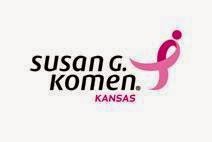Breast
Health Information: Inform, Engage, Empower
1130AM
CT to 1230PM CT | 10.01.2014
Hosted
by the North Central Region of Susan G. Komen
This
webinar will be a conversational style discussion about family history,
personal risk, breast screening recommendations, breast cancer signs and
symptoms, and making healthy lifestyle choices. Participants will leave feeling
empowered to be an active participant in their own health!
Presenter
Amberlea Childs manages the Kohl’s Conversation for a Cure Program for Komen
Southeast Wisconsin. The goals of this program are to educate the community on
the importance of breast health and to encourage women to take action by
getting lifesaving breast cancer screenings (ie. clinical breast exams,
mammograms).
Mrs.
Amberlea Childs
Mrs.
Childs oversees Susan G. Komen’s – Kohl’s Conversations for the Cure, a breast
health education and screening program in Southeast Wisconsin. In addition to
recruiting and training the volunteer pool of diverse community health workers,
Amberlea is also a breast health educator and has been talking and teaching
breast health for over 10 years. First trained as a Triple Touch Trainer
through the American Cancer Society and now a 3-year breast cancer survivor
herself, she knows firsthand the value of screening and advocates for women to
take action and become an active participant in their health.
Mrs.
Childs founded a breast cancer educational non-profit, Viva Las Chicas in St.
Petersburg, FL and currently serves on the Board of Directors. She is an active member in many breast cancer
groups and coalitions nationally and statewide.
Additionally, Mrs. Childs was diagnosed with breast cancer while having
no health insurance and continues to advocate that just because a woman doesn't
have health insurance doesn't mean she should have to forego on her healthcare.
Mrs. Childs has a Bachelor of Fine Arts degree from University of South
Florida.
